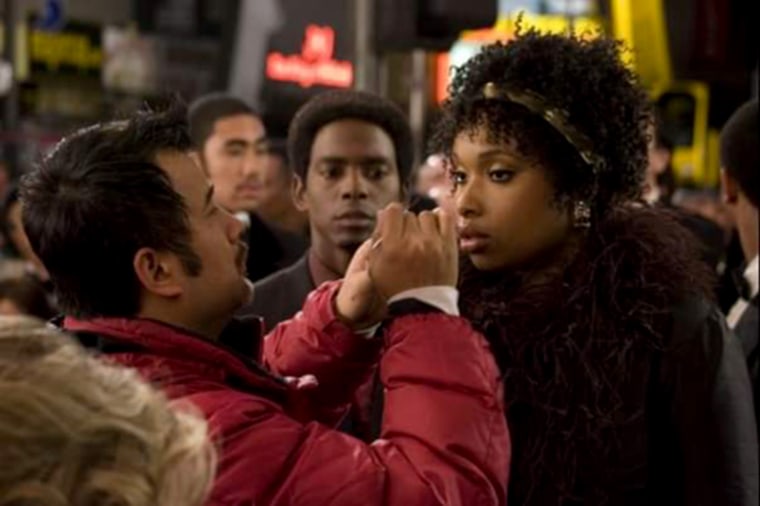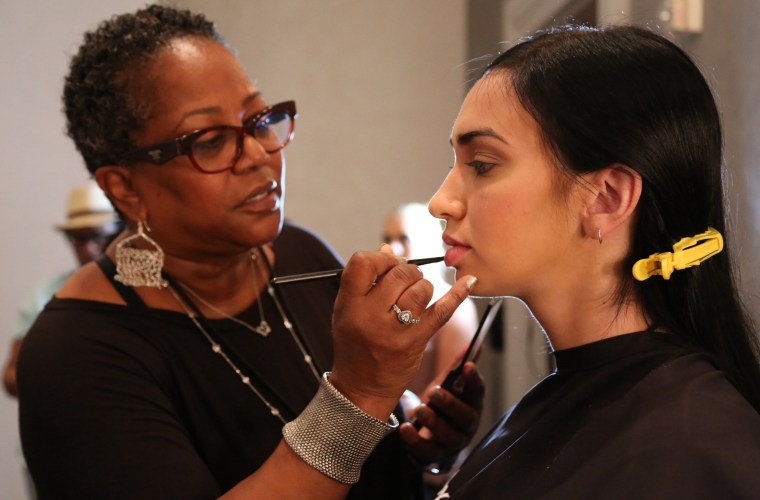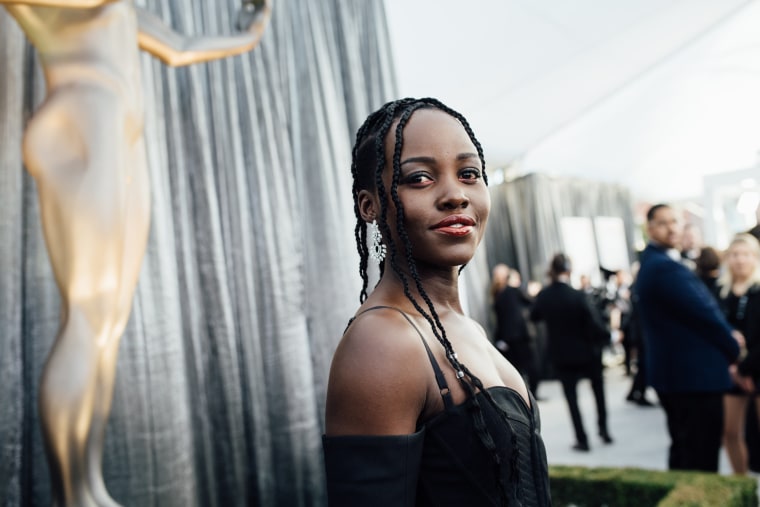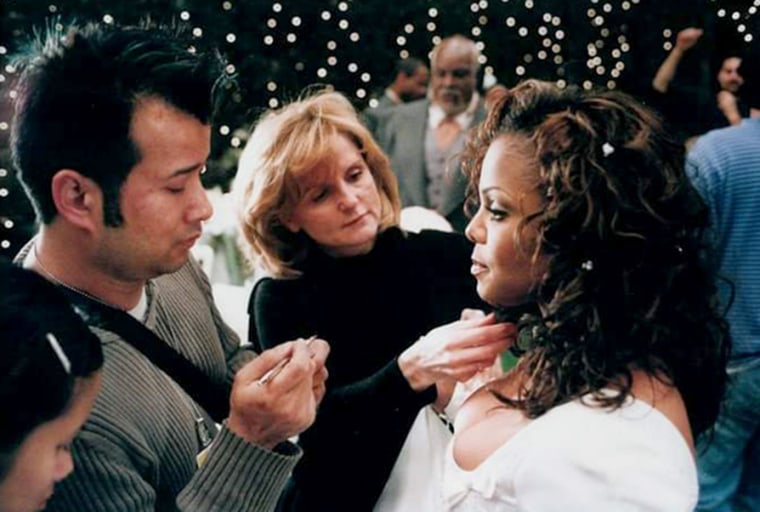Even after two decades of doing makeup for some of Hollywood’s biggest names, Tym Buacharern struggles with finding the right foundation shades for some of his clients.
Not that he’s surprised. When he started attending makeup school, he took a course with two major makeup artists in Hollywood and asked if he and other students would be learning how to apply makeup on women of color. Buacharern said they told him they wouldn’t be because 90 percent of their careers would be spent working with white actors.
“That was very shocking to me, especially at a place that you’re supposed to be learning,” he said.

With more than 80 credits to his name, Buacharern has found that hasn’t been the case. He’s done makeup for Janet Jackson and worked as makeup department head for the 2006 Academy Award-winning film “Dreamgirls.” His projects last year included “American Crime Story: The Assassination of Gianni Versace” and the Oscar-nominated “Black Panther.”
But even with Hollywood working on diversity, the makeup industry, he said, still has some catching up to do. “Just because they have an Asian, Latino or African-American face on the poster, when you get to the counter, the products that represent those people are not there or easily accessible,” he said.
A Changing Conversation
In recent years, social media and YouTube have upped the conversation around the lack of diversity in makeup brands — something that’s been noticeable since Rihanna launched Fenty Beauty in 2017, which originally featured 40 shades of foundation and last month added 10 more. The brand also recently introduced 50 matching concealers.
From the blogger Nyma Tang’s 2017 YouTube video review: “When I went to Sephora to go pick up this foundation, I saw other dark-skinned girls getting matched in this foundation and it literally melted my heart.”
“I love that this product was available to so many people so fast," she said.
And that experience is reflected in the numbers: In its first 40 days, Fenty was estimated to have raked in $100 million in sales.
Fenty’s launch, and the conversations online that followed, highlighted a problem many consumers have faced for a long time and has come to be seen as a standard-bearer for the unveiling of new products. Since 2017, foundation launches from major brands such as Beautyblender, Tarte and Too Faced received backlash for catering mostly to lighter skin tones, with the majority of criticism pointing to a brand like Fenty as being able to accomplish an inclusive launch from the start.
“Ever since Fenty came out with the whole 40 shades, that’s like the golden number: 40 shades. But if you just have 40 shades of beige, it’s like … ‘Why?’” Tang said last year while reviewing Beautyblender’s controversial 32-shade foundation launch.
But even with Fenty changing the game, there’s still a long way to go across the industry. For Beverly Jo Pryor, who has worked as the head of makeup for films and shows like “Empire” and “Selma,” an inclusive range is more than just about the appearance of one’s skin. Some of the darker foundations she has seen can appear “muddy” or not look that great in front of camera lights, which can sometimes lead to a person having to buy multiple products.
“I’ve been mixing and blending from the very beginning because that’s what I do,” Pryor said. “Everybody has different undertones. You have to know how to mix and blend like a painter and get the color they need.”

Buacharern agreed that more products on the market hasn’t necessarily made everyday work easier. He still comes across instances where, when asking for a specific shade, the products were hidden away in a drawer instead of displayed with the rest of the products — a move he thinks could affect sales and placement at department and makeup stores.
“When a person doesn’t see their shade, they move on to the next one,” he said.
Changing How the Industry Thinks
But makeup brands are not the only ones at fault, according to celebrity photographer Alexi Lubomirski, who shot the official wedding photos for Meghan Markle and Prince Harry. Some magazines and advertising companies use effects to lighten an image’s subject, Lubomirski said — something he hadn’t been fully aware of until working with Academy Award winner Lupita Nyong'o for a Lancôme advertisement in 2014.
Lubomirski said that after the shoot, Nyong'o specifically requested that her skin not be altered in post-production as had been done in previous shoots.
“I had never heard of that before,” Lubomirski said, adding that he "of course" agreed to the request.

That experience led Lubomirski to publish a book of portraits, “Diverse Beauty” (with Nyong'o on the cover), to show magazines and brands that diversity wasn’t a detriment to a photograph, and that women of all color, size, age and sexual orientation can be “high fashion.”
For Buacharern, his work on films such as “Black Panther” and the upcoming Jordan Peele film “Us” is a testament to how much the industry continues to change.
“These films show that there is so much talent in every ethnic group,” he said. “As a makeup artist, I’ve been honored to work with literally every person from Judith Light on ‘Versace’ all the way to Lupita on ‘Us,’ so the range of skin tones I’ve worked with are so different and diverse.”
Buacharern added that he was recently invited to speak at Make-Up Designory, a make-up training school with locations in Burbank, California, and New York City — another sign that things have changed since his experience as a student.
“Now schools are gearing more toward learning about the undertones, skin tones and textures versus just trying to slap on one color,” he said.
And that training will be more and more important for the next generation of artists whose work may be part of the next “Black Panther” or “Crazy Rich Asians”
“I love seeing the diversity that’s on set now, both onscreen and behind-the-scenes," he said. "It’s nice to see, and I want to continue to see more of it."
Follow NBC Asian America on Facebook, Twitter, Instagram and Tumblr.


